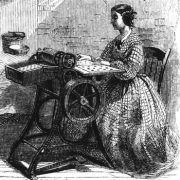How Postage Stamps are Made
The process of how postage stamps are made has come along way since the mid 1800’s. Today, over 50 million stamps can be printed and readied for distribution in a single day. Technological advances have made the production of postage stamps faster, cheaper, and safer from potential forgery.
Some designs and elements of a given stamp issue still call for engraving work. But skilled artists complete the bulk of design work with computer software. Scanners transfer the original stamp artwork to the software. Artists finely tune the digital reproductions to adhere to dimensional and procedural requirements specific to postage stamps.
From here, the digital design is transferred to 4 printing plates, one per CYMK (Cyan,Yellow, Magenta, and Black) color to be used for a given stamp issue. The plates contain rows of the same design so entire sheets can be printed at once. Inspectors closely monitor each stage to ensure quality and accuracy.
The plates are loaded into the stamping, or printing press. The press blends and layers the 4 main CYMK colors into as many final colors as needed. A special ink is also applied during printing as an additional step to prevent forgery. The ink also helps inspectors more accurately discover defects.
Prior to 2005, the Bureau of Engraving and Printing handled the bulk of the stamp printing work. Since then, all U.S. postage stamps have been printed by carefully selected private printing facilities. Today, only a handful of printing companies are authorized by the U.S. Government to produce postage stamps.
Many a stamp collector loves error stamps. While the government is not against stamp collecting in any way, every effort is made to prevent errors from being released to the public. But machines require moving parts. And moving parts, well…move. Therefore adjustments are constantly being made to nudge centering, color saturation, and finally cutting.
Up to 40 billion stamps are produced by the U.S. per year
The huge, now printed, rolls are cut down to size depending on the type of stamp being produced. Perforations and cut lines are also added at this time. Any sheets not up to standards are destroyed. Those that pass are finally cut into their final sizes and packaged for distribution. Up to 40 billion stamps are produced by the U.S. per year using this highly advanced stamp producing process.
Learn even more about how the stamps in your collection came to be by viewing these short videos:
Stamp Production – The National Postal Museum
The Modern Postage Stamp – The Universal Postal Union
Printing Postage Stamps – The National Postal Museum



